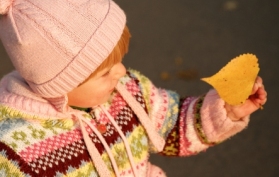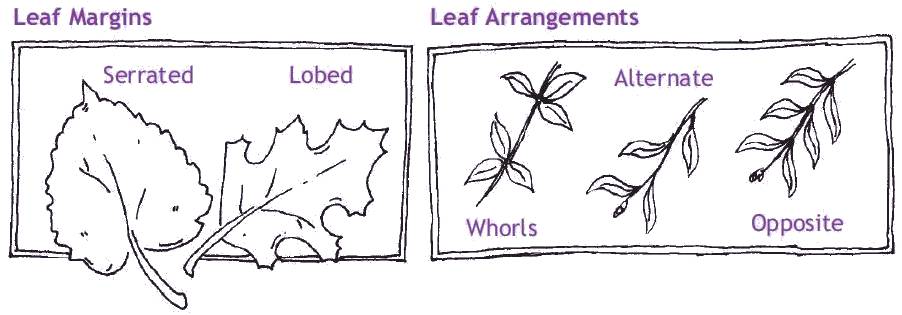 In this activity, children will take a closer look at leaves and find out more about leaf characteristics and how leaves can be used to identify plants.
In this activity, children will take a closer look at leaves and find out more about leaf characteristics and how leaves can be used to identify plants.
Doing the Activity
The next time you are in a forested area, have children collect leaves of various shapes, sizes, and colors from the ground.
Conduct a comparison investigation by asking:
- What differences and similarities can you see?
- What do the leaves feel like? Do they have hairs? Or teeth?
- Can you find the tree that each leaf came from?
Explain that leaves can be used to identify trees.
Use a field guide to identify a tree. Find a leaf from that tree, and compare the leaf structure described in the field guide to the real-life specimen you found on the ground.
How many other trees can you find with this same type of leaf?

The edges or margins of leaves can provide clues to the tree’s identity.
Another characteristic to identify a tree is the way its leaves are arranged on the twigs. Even needle leaves grow in patterns. For example, leaves on pines may grow in clusters of two, three, or more.
Have children make prints of the leaves they collect.
- To make a leaf crayon rubbing, place a leaf on a smooth, hard surface, vein side up, and cover it with a piece of paper.
- Rub a crayon back and forth across the paper, directly above the leaf.
What do you see? The leaf’s margin and veins will appear on the paper as you rub.
Download this Activity
Descarga la actividad en español: Observación de hojas
Get the Full Activity
This family activity is adapted from Project Learning Tree’s Explore Your Environment: K-8 Activity Guide and our PreK-8 Environmental Education Activity Guide which can be obtained from PLT’s Shop or in conjunction with an in-person professional development workshop or online course.
All PLT activities are copyright protected. Please remember to reproduce responsibly.
Click here for our Content Reprint and Adaptation Policy.


